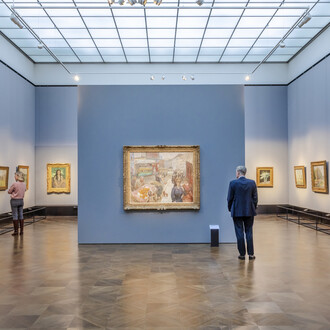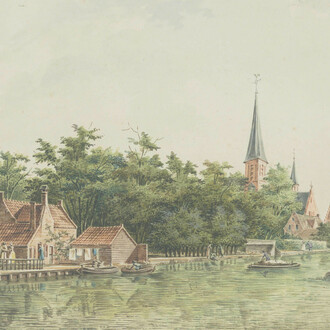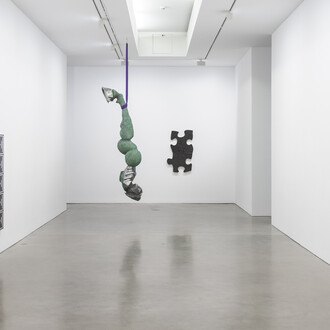The painting The Temple of Concordia at Agrigento by the Munich architect and painter Leo von Klenze (1784–1864), recently gifted to the Nationalgalerie, is an important addition to its collection. The Nationalgalerie already holds a considerable wealth of Neoclassical works by the Berlin architect, Karl Friedrich Schinkel (1781–1841); to these has now been added a major work by an important Neoclassical architect from Munich. Leo von Klenze was first and foremost an architect, but he was also a considerable draughtsman and painter. The number of paintings he left is nevertheless very small. He gave some of his large-scale architectural illustrations and town views to famous contemporaries, including Johann Wolfgang von Goethe (1749–1832) and Christian Daniel Rauch (1777–1857), and, indeed, his Berlin colleague, Karl Friedrich Schinkel. The painting The Temple of Concordia at Agrigento once hung in the collection of the Berlin Egyptologist Karl Richard Lepsius (1810–1884), to whom the artist gave it in exchange for Lepsius’ twelve-volume series of plates Denkmäler aus Aegypten und Aethiopien (Monuments of Egypt and Ethiopia), of which only a few copies were ever published.
Lepsius began his academic career as a linguist and archaeologist, but his fame spread far beyond Berlin after he was commissioned by the Prussian king to lead an expedition to Egypt from 1842 to 1845. The scientific results achieved by the “Egyptian enterprise” were considerable: Lepsius brought back almost 1,500 objects for the Neues Museum, which had recently been opened on the Museumsinsel (Museum Island), and field drawings of the artistic monuments he discovered were published in around 900 richly illustrated, large-folio plates. Leo von Klenze, for his part, had purchased examples of Egyptian art on behalf of the king of Bavaria some years earlier, and had used them to establish an important Egyptian art collection in Munich. In this context, it is not surprising that Klenze was particularly interested in Lepsius’ richly illustrated volumes of plates and offered his painting as a diplomatic gift in return for them.
In their endeavours, both men relied on the lively interchange between science and art: Leo von Klenze used archaeological sources to create his idealised landscape paintings, while Karl Richard Lepsius used artists and artistic media to convey the visual appearance of his archaeological discoveries.
By juxtaposing Lepsius’ plates and Klenze’s painting of the Temple of Concordia, the exhibition exemplifies the harmonious exchange envisioned by Friedrich Wilhelm IV when he declared the Museum Island to be “a sanctuary of art and science”.
The display in the temporary exhibition room includes around 35 objects: paintings, sculptures, drawings, books and scientific artefacts – including items on loan from the original Klenze bequest, kept at the Bayerische Staatsbibliothek in Munich, and works from the SMB’s Kupferstichkabinett and Ägyptisches Museum, the Berlin-Brandenburgische Akademie der Wissenschaften, and the Staatsbibliothek zu Berlin.
















